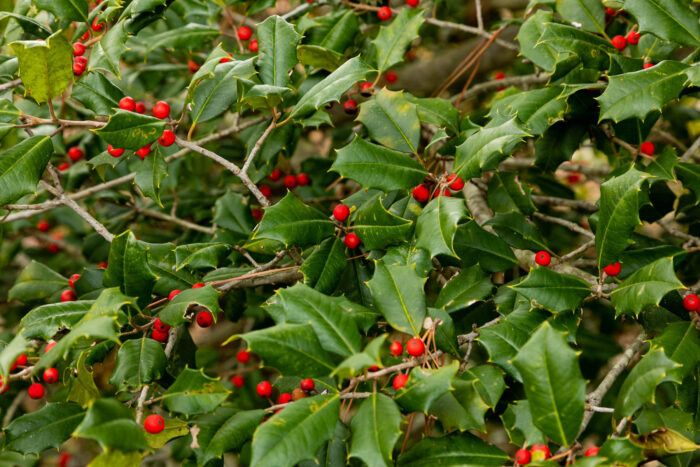American Holly
Ilex opaca
The American holly is an evergreen tree with stout, stiff branches and spine-tipped leaves. Female trees have small, bright red berries. It grows in moist areas throughout the Chesapeake Bay watershed.

